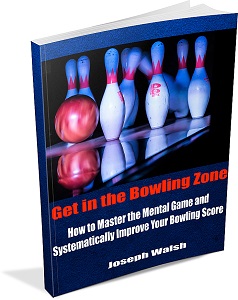When you step up to the approach, you naturally hope to send your ball smoothly down the lane and into the pocket. But how hard should you throw it in order to achieve this goal?
A shot that travels fast and hooks strongly across the lane often looks the most impressive, so it can be tempting to try to closely emulate the shots you see from professionals on TV or a high-scoring bowler that you face in your league.
But no single delivery is right for every bowler, and trying to copy someone else’s shot just because they look successful can be a harmful strategy.
But what, then, is the best ball speed to use when releasing your bowling shot?
The short answer, as you might guess, is that there isn’t one easy and perfect answer: the ideal bowling ball speed depends on some different factors.
But knowledge of those factors as well as general guidelines can help you determine what is going to be the most effective speed for your own game.
The USBC’s Guidelines for Best Bowling Ball Speed
First, the USBC and ball manufacturers have actually given some recommendations as to what ball speed is best, and their research indicates that 21 mph at the release is optimal (which corresponds to 17 mph when it gets down the lane and hits the pins).
The idea is that this will lead to ideal pin carry.
Advantages and Disadvantages of Fast and Slow Speeds
There are, however, trade-offs with different bowling ball release speeds.
In particular, a faster shot will give you more pin action, but it will have less of a chance to react to the lane, which results in less hook.
On the other hand, a slower shot will hook more, but at the expense of some pin action. You need to tune in to your own game and your strengths and weaknesses to determine what’s best for you.
Lane Conditions and Rev Rates As They Relate to Ball Speed
Important things to keep in mind when thinking of ball speed are lane conditions and your rev rate in order to achieve the right entry angle into the pocket.
Extra slick lanes will be challenging for a very fast ball speed, as the ball will often skid too far and miss the pocket.
And similarly, very dry conditions can sometimes require a faster shot in order to hit your target efficiently.
And ball speed is not the only factor that matters when matching up to the current lane conditions; your rev rate is also crucial.
Here is a chart that matches up rev rates and ball speeds: CHART
So in conclusion, there are several different factors to keep in mind when you’re trying to figure out how hard to throw your bowling ball.
Ultimately, determining your optimal ball speed will require some consideration of the conditions and your own game, and above all, practice!



It is interesting to learn a little bit about the right speed for bowling. I love to bowl, but I know that I often get gutter balls from balls that are too fast or too slow. Learning about how this really should be able to improve my game.
Yes, the speed of your ball can make a big difference. Bowling too fast or slow also changes the way the ball reacts to the lane conditions, which can spell the difference between hitting the pocket or missing it.
It’s really interesting that the optimal speed is 21 mph. Do bowling alleys typically measure the speed the ball starts or the speed it hits the pins? I’d like to practice getting my speed to match the 17 mph when it hits the pins.
Skylar,
It can be either, depending on where the optical sensors are. I think it’s more common to be closer to the pins. But overall, the speeds can be pretty unreliable, unfortunately.